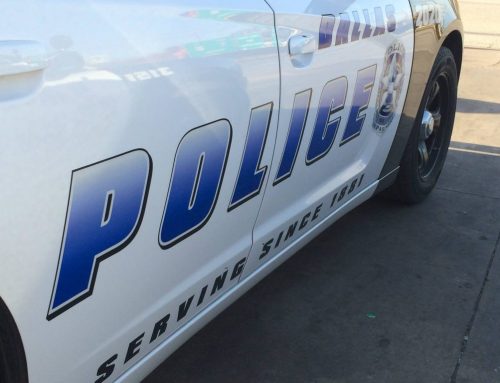By David Caringer
Imagine you are a cashier in a small delicatessen in an older East Dallas shopping center. It’s 5:45 p.m. Tuesday, and the deli closes in 15 minutes. Your last customer browsed for a short time, asked several questions about some deli items and made a small purchase before leaving several minutes ago.
The cleaning man has begun sweeping as you prepare to close. You’re in a hurry because you have plans following work, and taking the deposit to the bank is out of your way.
Just as you are about to leave, your last customer returns and walks straight to the register. The well-dressed woman her mid-30s appears nervous.
For a moment, time stops. You know something is desperately wrong as she swings a large, open purse onto the counter and aims a pistol at your face. Your chest tightens unbearably and your legs weaken as she orders you to empty the register into her purse.
You want to stop her, but the gun’s muzzle seems to grow larger with each passing moment. Just as you open the register, the cleaning man walks out of the back room and drops his book with a startled gasp.
The diversion provides your opportunity, and you lunge toward the gun. The muzzle flashes, and you experience the hammer-like feeling of a bullet slicing through flesh….
This couldn’t happen to you. Could it? But what if it did? What should you do?
Any Dallas retailer can be a target. A criminal determined to commit armed robbery will seek a target promising the highest gain with the lowest risk. But you can stack the odds in your favor.
Robberies usually are conducted in two phases: The planning or “casing” phase, and the execution phase.
Discouraging the criminal during the casing phase is your best bet. Here are some ideas:
First, make frequent “cash drops” to keep large cash amounts from accumulating. Limit change on hand to that absolutely necessary to run the business, and place a sign on the register stating the limit of cash available.
Place “cash drops” in a safe until deposit, which should be done frequently but not necessarily according to a fixed schedule. Change routes frequently, and never make a bank run on foot unless the bank is in the same building or immediately next-door.
Increase the real and perceived crime risk by installing a heavy, floor-model safe bolted to the floor from inside the safe box. Contrary to popular opinion, the best place for a safe is in plain view. Why? Most robbers are nervous during the “casing” phase and terrified while committing a crime. A criminal doesn’t want to be visible from the street while conducting his business.
For the same reason, cash registers should be clearly visible from the street. Consider installing video cameras to record continuously, to record when triggered at the register or to simply provide monitoring capability from a remote location.
If you can’t afford real cameras, authentic-looking “dummy” cameras are available at a much lower cost, and they can have the same deterrent impact. Real cameras, however, provide much-needed evidence in the event of a robbery.
If your alarm system doesn’t include “panic” hardware capable of being triggered at register, contact your alarm company immediately. Ensure the alarm company’s presence is prominently advertised with stickers or signs on the front door and at or near each register.
Clearly mark all exits with vertical measurement lines, making it easier for shaken victims to recall a suspect’s height.
Finally, an attentive and courteous salesperson that acknowledges each customer and asks to be of assistance can encourage nervous, would-be robbers to try a less friendly environment.
If the unthinkable happens and a robbery occurs, cooperate with the robber, try not to panic and make no sudden moves. The suggestion may seem cowardly, but what’s more important to you: the money in the register or your life?
Remember, the robber is probably just as terrified as you are, and the last thing either of you can afford is panic. Keep your hands visible at all times, and announce your actions in advance. Avoid direct eye contact unless the robber instructs otherwise. (Direct eye contact can be perceived as a challenge, and a robber isn’t likely to appreciate it.)
Answer questions as they are asked, but don’t babble. If possible, avoid moving away from registers and into back rooms or storage areas. Don’t display anger, and don’t try to imitate John Wayne and overcome the robber. In most cases where robbery victims are injured or killed, they initiated a fight with a robber.
If a robbery occurs, notify the police immediately, even if you initiated a panic alarm during the incident. Give the dispatcher as much information as possible about the suspects, their mode of transportation and travel direction.
And whatever you do, don’t release the amount stolen to the news media, no matter how large or small. By publishing this information, you can encourage “copy-cat” crimes.
Armed robbery is a serious threat in our community. But sharing information with neighboring retailers about suspicious customers or vehicles, you might help prevent a robbery.
The best advice: Pay attention to your customers. This recommendation is good for business and good for helping prevent robberies.
David Caringer is director of loss control for Highland Park Cafeterias. He is a former police officer and army security officer.





